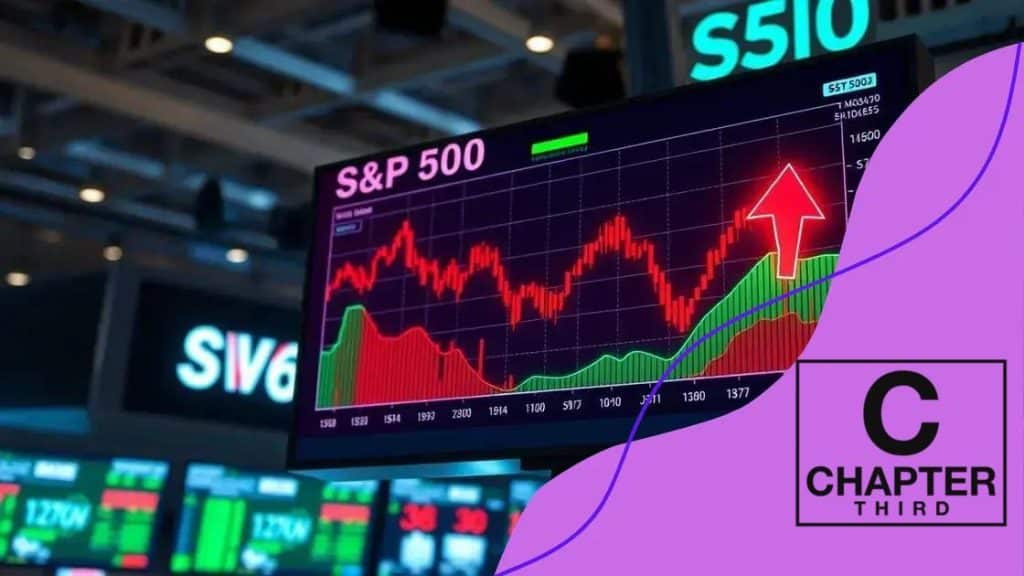S&P 500 shifts with tariffs: what you need to know

S&P 500 shifts with tariffs significantly impact market dynamics, requiring investors to adapt through diversification, monitoring political developments, and focusing on resilient sectors to navigate the uncertainties effectively.
S&P 500 shifts with tariffs are becoming more common, raising questions about market stability and investor strategy. Have you wondered how these changes affect your portfolio? This article dives into the dynamics at play, helping you navigate through this complex financial landscape.
Understanding tariffs and their impact
Understanding tariffs is essential for grasping how they influence the market, particularly the S&P 500. Tariffs are taxes imposed on imported goods, and they can significantly alter pricing and availability. When tariffs are enacted, consumers often feel the impact through higher prices. For investors, it’s crucial to understand how these tariffs can shift market dynamics.
How Tariffs Affect the Market
Tariffs can have immediate effects on the stock market. One main outcome is the potential increase in costs for companies relying on imported materials. As these costs rise, companies may pass them on to consumers, which can affect sales and profit margins.
Moreover, tariffs can lead to trade retaliation, where affected countries impose their own tariffs in response. This can create a domino effect, further impacting the S&P 500. Companies within key sectors can experience varying effects based on their dependency on international trade.
Key Affected Sectors
- Technology: Often relies on international supply chains for components.
- Consumer Goods: Prices may rise, influencing purchasing decisions.
- Automotive: Tariffs can directly increase production costs, affecting car prices.
- Energy: Fluctuations in tariffs can impact energy markets significantly.
These sectors, among others, require close monitoring during times of tariff changes. For instance, the automotive industry can be heavily influenced by tariff adjustments since many companies import key parts. Understanding these relationships helps investors make informed decisions, especially when considering the volatility of the S&P 500.
By analyzing these factors, investors can better position themselves to navigate tariff changes. This approach includes reassessing their portfolios to mitigate risks associated with specific sectors. Knowledge of how tariffs impact market trends is key to making sound investment choices.
Historical shifts in the S&P 500
Historical shifts in the S&P 500 provide valuable insights into how the market reacts to various economic factors. Observing these shifts can help investors understand past trends and anticipate future movements. Various events, such as economic downturns and significant policy changes, have left lasting impacts on the index.
Significant Events and Their Impact
Several major historical events have caused noticeable shifts in the S&P 500. For example, the 2008 financial crisis drastically affected stock prices and investor confidence. During this time, the index fell sharply, illustrating how crises can lead to rapid declines. In contrast, periods of economic growth, such as the post-2008 recovery, saw significant rebounds in the index.
This correlation between economic events and the S&P 500 highlights the importance of monitoring market conditions. Factors like interest rate changes or governmental policy adjustments can lead to immediate responses in the index. Investors should always be vigilant regarding such changes.
Trends Over Time
- The Dot-com Bubble: The late 1990s saw a surge in technology stocks, leading to a rapid rise in the index.
- The Great Recession: A steep decline in 2008 that impacted millions and caused long-term consequences.
- Recovery Periods: After major downturns, the index often rebounds, signaling renewed investor confidence.
- COVID-19 Impact: In 2020, a sudden drop occurred due to the pandemic, followed by one of the fastest recoveries in history.
These trends show how resilient the S&P 500 can be despite challenges. Each historical shift is a reminder of the market’s volatility and the importance of remaining informed about potential risks. Investors can analyze these patterns to make informed decisions regarding their portfolios.
Understanding historical shifts also involves recognizing the emotional aspects of investing. Fear and greed often drive market behavior, as seen in various bubbles and crashes. By studying history, investors can aim to make decisions that align with long-term goals rather than short-term emotions.
Key sectors affected by tariff changes

Tariff changes can significantly impact various sectors of the economy. Understanding which sectors are affected helps investors make informed decisions regarding their portfolios. The S&P 500 is often influenced by fluctuations in these key sectors.
Technology Sector
The technology sector is one of the most affected by tariff changes. Companies that rely on imported electronics and components can see their production costs rise. As tariffs increase, prices for consumers may also go up, which can lead to decreased sales. Investors should closely monitor how these changes affect company earnings.
Consumer Goods Sector
Consumer goods are another area where tariffs can have a major impact. Many products sold in stores are imported. When tariffs are applied, the cost of these goods can rise. This might prompt consumers to spend less, which can hurt sales for companies in this sector.
Automotive Industry
- Impact of Tariffs: The automotive industry is heavily reliant on several imported parts and materials.
- Price Increases: Tariffs can drive up car prices, making them less affordable for consumers.
- Sales Dips: Higher prices can lead to a decrease in sales, affecting profitability.
This challenge affects not only manufacturers but also dealerships and consumers. Analysts often watch the automotive sector when assessing economic health.
Energy Sector
The energy sector also feels the effects of tariffs. Changes can impact the prices of imported oil and natural gas. As tariffs increase, the cost to consumers may rise as well. This can lead to broader economic repercussions, affecting everything from transportation costs to electricity prices.
Recognizing which sectors are most vulnerable to tariff changes allows investors to implement strategies to protect their investments. Tracking these changes can highlight potential opportunities as well as risks. Understanding the interplay between tariffs and these key sectors gives investors a clearer picture of market dynamics.
Strategies for investors during tariff fluctuations
Investors need effective strategies to navigate the uncertainty that comes with tariff fluctuations. These changes can significantly affect the S&P 500 and overall market conditions. By understanding how to adapt, investors can protect their assets and seize opportunities.
Diversifying Portfolios
Diversifying investments is a key strategy. By spreading investments across different sectors, investors can reduce risk. If one sector is negatively impacted by tariffs, other sectors may perform better. For example, while tariffs might hurt the automotive industry, they could benefit domestic manufacturers.
Monitoring Political Developments
Staying informed about political changes is essential. Tariffs are often influenced by governmental policies and international relations. By following news related to trade agreements, investors can anticipate shifts in the market. Awareness of upcoming negotiations allows for better timing in buying or selling assets.
Investing in Domestic Companies
- Support Local Businesses: Domestic companies may be less affected by tariffs compared to international ones.
- Stable Performance: These companies might provide more predictable returns during turbulent times.
- Beneficial Policies: Government incentives for local firms can enhance their growth prospects.
Investors should research companies less reliant on imported goods, as they are more resilient against tariff changes. This approach can lead to steadier performance in their portfolios.
Using Options for Protection
Options trading can serve as a protective measure during uncertain times. Investors can use put options to hedge against losses in their portfolios. This strategy allows them to sell stocks at a predetermined price, providing some security if prices fall due to unfavorable tariff announcements.
Adopting these strategies can help investors remain proactive during tariff fluctuations. By understanding key sectors and employing effective tactics, investors can better navigate the effects of tariffs on the S&P 500 and the broader market.
The future of the S&P 500 in a tariff landscape
The future of the S&P 500 in a tariff landscape is uncertain and layered with potential challenges and opportunities. Investors must consider how current and future tariffs will shape market dynamics. As governments impose and adjust tariffs, the implications for the economy and industries can vary widely.
Economic Growth Expectations
Economic growth will play a crucial role in the performance of the S&P 500. If tariffs are high, growth may slow down as companies face rising costs. This can lead to reduced consumer spending. On the other hand, if tariffs decrease or trade agreements improve, industries can thrive, leading to better performance in the stock market.
Sector Responsiveness
Certain sectors may respond better than others to changes in tariffs. For instance, technology firms may face challenges but could also innovate and adjust quickly to tariff conditions. The energy sector might benefit from tariffs on foreign oil, as domestic production could become more competitive. Therefore, understanding sector-specific impacts is vital for investors.
Long-term Investment Strategies
- Focus on Resilience: Invest in companies that demonstrate the ability to adapt to tariff changes.
- Diversification: A well-diversified portfolio can help cushion against sector-specific downturns.
- Regular Monitoring: Keep an eye on trade policies and adjust investments as markets react to tariff news.
Establishing an active investment approach allows for better handling of market fluctuations driven by tariffs. Investors can maximize potential gains while mitigating risks by staying informed.
Moreover, the evolving geopolitical landscape will continue to influence tariffs. New trade agreements or tensions may arise, producing reactions in global markets. The S&P 500 will likely experience volatility as markets incorporate these factors into stock prices. Understanding these dynamics is key to navigating future investments.
FAQ – Frequently Asked Questions about the S&P 500 and Tariffs
How do tariffs affect the S&P 500?
Tariffs can impact the S&P 500 by raising costs for companies that rely on imported goods, which may lead to reduced profits and lower stock prices.
Which sectors are most affected by tariff changes?
Key sectors affected by tariff changes include technology, consumer goods, automotive, and energy, each responding differently to tariff fluctuations.
What strategies can investors use during tariff fluctuations?
Investors should consider diversifying their portfolios, monitoring political developments, and focusing on resilient sectors to navigate tariff changes.
What does the future hold for the S&P 500 amid tariffs?
The future of the S&P 500 will depend on economic growth, political developments, and how sectors respond to ongoing and potential tariff changes.





